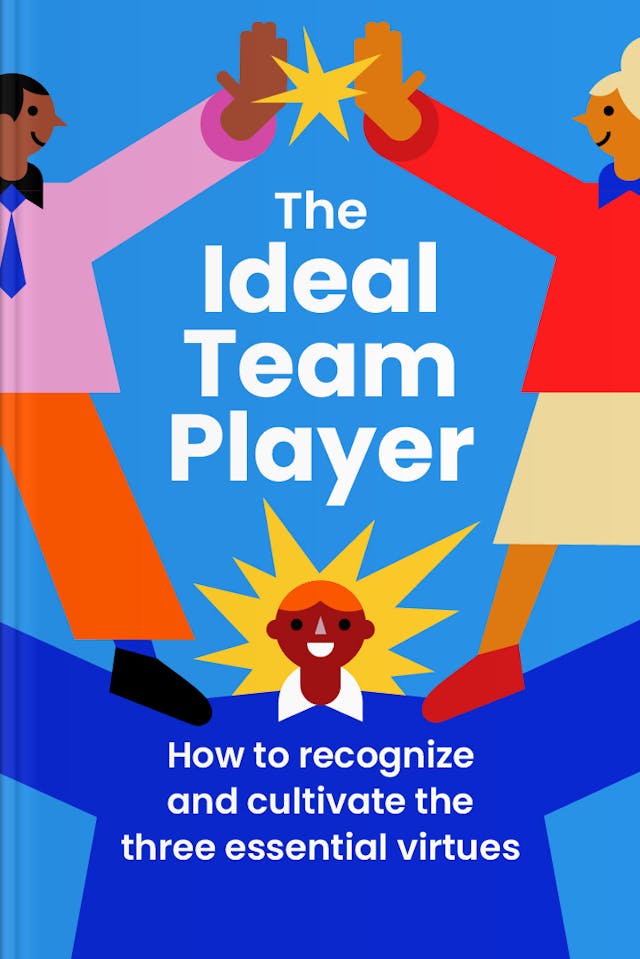You’ll learn
- How leaders mold ideal team players
- Ways to cut turnover with team virtues
- Secrets to transforming culture at work
- How to spot and shape a team player
russia has launched a full-scale war in Ukraine. Donate to support Ukraine and protect the world’s peace.

first KEY POINT
Organizations of the 21st century have realized the many benefits of teamwork and healthy team culture. However, is anything missing? Why do many teams still find it challenging to make headway, despite their highly talented membership? Responses to these questions border on a set of complementary but underrated virtues.Interestingly, humble, hungry, and smart team players are not only valuable in the context of work. They equally make excellently amiable spouses, parents, and other vital roles of life. A random sampling of team members, leaders, and business executives will show that the team player model is popular. However, it comes as a surprise that few people possess traits that align with the ideal team player model.Team players are not born that way. Instead, they grow into the traits gleaned from work history, life experiences, or active dedication to personal development. This information helps us understand that the behaviors that make a work team a healthy one are learnable. In effect, anyone can learn to be vulnerably trustworthy, engage in a healthy conflict, be accountable, actively commit, and focus on helping the team achieve positive results.
The humble, hungry, and smart attributes may not be residual in all individuals. However, leaders can narrow down the traits that symbolize the presence of these attributes during recruitment. Also, they can even build a culture that encourages and drives workers to fit into the ideal team player model. Before long, the productivity reports of such an organization will experience exponential improvement relative to team play culture.Just in case you’ve equally downplayed the three simple attributes that greatly aid teamwork, this summary will help you understand several benefits your team is losing. Read through to learn the manifold ways in which the humble-hungry-smart can add unprecedented value to your person and group.
second KEY POINT
Jeff Shanley is a business executive that has done well for himself in the past 20 years. He had several highs and achievements of note and a few lows that helped him grow. However, after his long stint in Silicon Valley, he decided to go for other challenges.After college, he had gone from one tech company to another, harnessing his host organizations’ marketing portfolios. Jeff Shanley co-founded a technology startup at a point but was demoted as CEO barely two years afterward. Being a co-founder, he had to work with his replacement and learned a lot about leadership in the process. Kathryn Petersen, the new CEO, ran the organization for four years straight before she retired. As soon as she left, Jeff Shanley followed suit. His next career adventure found him investing the wealth of his newly acquired proficiency with one of the many consulting firms of Silicon Valley.After twenty straight years of business leadership experience, Jeff Shanley reached a collective decision to go beyond the Silicon Valley horizon. The dilemma, however, lies with the how’s and where’s. Almost coincidentally, Jeff Shanley received a call from home. His uncle, Bob, was a resourceful, hardworking, and good-natured building contractor. Age was, however, knocking, and Bob was giving retirement his strong consideration. Jeff Shanley had been a good source of professional advice for his uncle, helping with improved teamwork in his company. So, Bob reached out to Jeff Shanley, asking if he knew anyone who would be a good fit as the new CEO of Valley Builders. It came as a shock to Bob when his nephew asked if he would be willing to hire someone like him — with emphasis on his inexperience in construction. Bob could never have imagined that Jeff Shanley would abandon his Silicon Valley career for some construction company in Napa Valley.

Continue reading with Headway app
Continue readingfirst KEY POINT
second KEY POINT
third KEY POINT
fourth KEY POINT
fifth KEY POINT